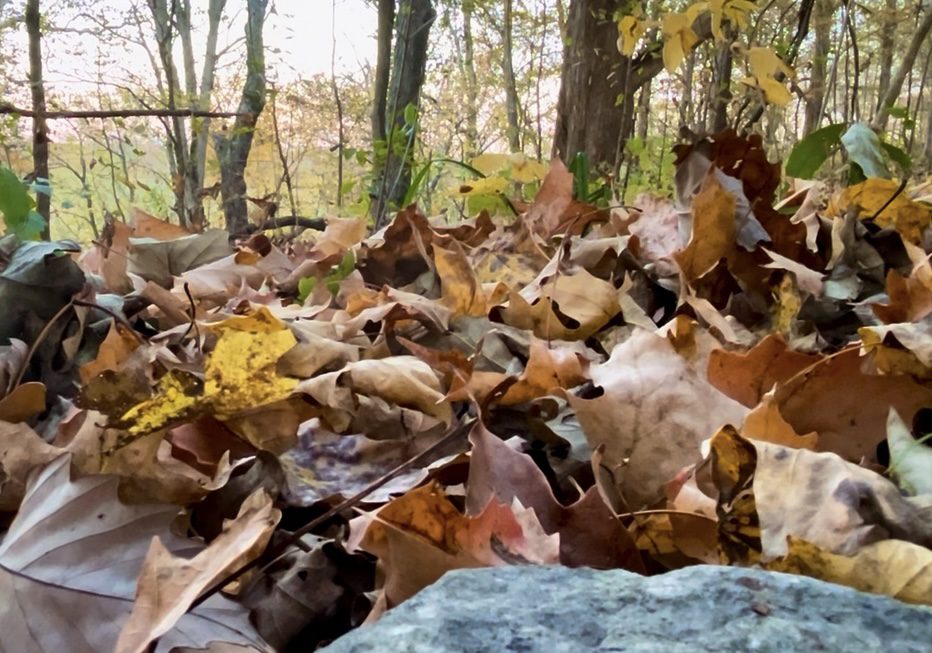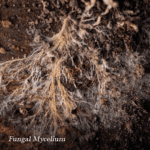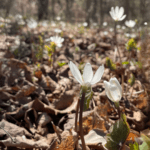
Decomposition Season: Nature’s Cleanup Crew at Work
As we get deeper into fall and the forest floor becomes blanketed with leaves, the woods begin their quietest yet busiest transformation of the year. It’s natural to feel a bit wistful as we say goodbye to colorful flowers and full, leafy canopies. But this shift isn’t an ending. The fading blooms and bare branches of late fall mark the opening chapter of one of nature’s most essential processes: decomposition.
Without decomposition, organic matter would pile up, and forests would eventually run out of available nutrients to support new growth. Every twig that snaps, every log that softens underfoot, and every leaf that fades to brown plays a role in maintaining this delicate cycle.
While trees shed their leaves and plants die back, some of the park’s smallest residents step in as the cleanup crew. Bacteria, fungi, and invertebrates begin breaking down what’s left behind. This invisible workforce recycles nutrients back into the soil, ensuring that next year’s growth has everything it needs to flourish.
Larger Decomposers: Ground-Level Recyclers
 When a leaf falls, it doesn’t simply disappear. Its transformation begins with some of the forest’s most familar (and overlooked) residents. Larger decomposers like earthworms, beetles, and millipedes move through the leaf litter, tearing, chewing, scraping, and grinding plant material into smaller and smaller pieces. This physical breakdown dramatically increases the material’s surface area, which gives smaller decomposers more places to attach, speeding up decomposition.
When a leaf falls, it doesn’t simply disappear. Its transformation begins with some of the forest’s most familar (and overlooked) residents. Larger decomposers like earthworms, beetles, and millipedes move through the leaf litter, tearing, chewing, scraping, and grinding plant material into smaller and smaller pieces. This physical breakdown dramatically increases the material’s surface area, which gives smaller decomposers more places to attach, speeding up decomposition.
During fall, when leaf litter is cool and moist, this ground-level cleanup crew becomes especially active. If you lift a soggy layer of leaves, you may glimpse their work in action: crisp leaves on top, and beneath them, a layer already turning soft, speckled, and soil-like thanks to these small but mighty recyclers.
Bacteria and Fungi: Nature’s Chemists
Next, bacteria and fungi begin to break down the remaining plant matter. These organisms release enzymes that dismantle complex organic compounds like cellulose, converting them into simpler molecules. Over weeks and months, those molecules mix with the soil to form humus, a dark, nutrient-rich layer that stores carbon, retains moisture, and nourishes plant roots.
Mighty Mushrooms
 You’ve probably spotted mushrooms on the forest floor or sprouting from logs. These visible fruiting bodies are just the tip of the fungal world. While bacteria handle many early chemical breakdowns, fungi excel at the heavy lifting. They are the only organisms capable of fully decomposing lignin—the compound that gives wood its rigidity and durability. This makes fungi indispensable for recycling logs, branches, and other dense plant material.
You’ve probably spotted mushrooms on the forest floor or sprouting from logs. These visible fruiting bodies are just the tip of the fungal world. While bacteria handle many early chemical breakdowns, fungi excel at the heavy lifting. They are the only organisms capable of fully decomposing lignin—the compound that gives wood its rigidity and durability. This makes fungi indispensable for recycling logs, branches, and other dense plant material.
In Kentucky forests, species like turkey tail and oyster mushrooms frequently appear on fallen wood, each playing a distinct role in slowly digesting tougher material. Even fast-acting fungi like inky caps help accelerate the breakdown of softer plant debris. Together, these species return locked-away nutrients to the soil and keep the decomposition cycle moving.
A Living Network
 Hidden beneath the leaf litter is a vast network of fungal threads known as mycelium. This living system does a little of everything—building, maintaining, and expanding a web that connects and sustains the forest. Think of these microscopic filaments like the fungi’s “root system,” which help nutrients move between plants and break down organic matter.
Hidden beneath the leaf litter is a vast network of fungal threads known as mycelium. This living system does a little of everything—building, maintaining, and expanding a web that connects and sustains the forest. Think of these microscopic filaments like the fungi’s “root system,” which help nutrients move between plants and break down organic matter.
Many fungi form mutualistic relationships with trees and plants, exchanging nutrients through their shared network. In this way, the same organisms that decompose the old also help sustain the living—linking decay and growth into one continuous system.
 A Hidden Collective Effort with Lasting Impact
A Hidden Collective Effort with Lasting Impact
Decomposition might not have the flash of spring blooms or the brilliance of fall color, but it’s the foundation that makes both possible. Every handful of healthy soil in The Parklands holds the story of countless organisms working together—turning yesterday’s leaves into tomorrow’s forest.
So the next time you walk a trail carpeted in leaves, take a moment to notice what’s happening beneath your feet. Even as the forest rests, its cleanup crew is hard at work, ensuring the cycle of life continues.
